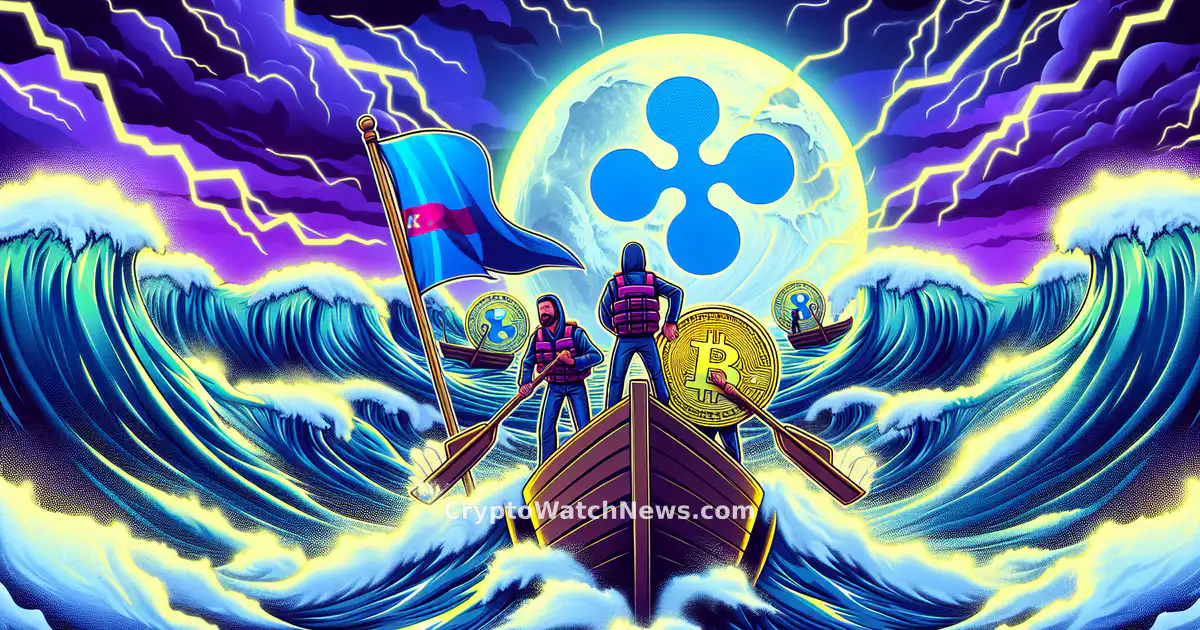Regulatory Challenges Impacting XRP Value
XRP has faced significant market volatility, losing $19 billion in value, largely influenced by the ongoing regulatory hurdles. The U.S. Securities and Exchange Commission’s (SEC) lawsuit against Ripple Labs casts a long shadow over investor confidence, with an anticipated resolution not expected until 2025. This legal uncertainty, coupled with delays in SEC decisions on XRP exchange-traded fund applications, creates a precarious environment for institutional investors. As the digital currency hovers around $3.00, its inability to surpass former highs is emblematic of the broader challenges it faces.
Market Analysis: XRP
Market Insights
The current price of $2.83, coupled with a 24-hour change of -1.98% and a 7-day decline of -9.87%, indicates a downward trend in the market, suggesting bearish sentiment among investors. The substantial market cap of $168.95 billion reflects significant investor interest, but the high 24-hour trading volume of $7314.26 million points to increased volatility and uncertainty. This combination of factors suggests that investors are actively trading, possibly in response to short-term market fluctuations or broader economic concerns.
Technical Analysis and Market Sentiment
Technical indicators suggest that XRP needs to break key resistance levels at $3.30 to signal a potential upward trend, yet recent declines illustrate its susceptibility to market shifts. Liquidity concerns are exacerbated by a broader macroeconomic landscape and Bitcoin's dominance, which impacts altcoin stability. The Fear & Greed Index currently reflects caution among traders as they vigilantly monitor support levels around $2.20; any breach here could prolong bearish trends in its price trajectory.
Institutional Adoption Through Cross-Border Payments
Despite short-term obstacles, XRP’s role in facilitating cross-border payments provides a robust foundation for future growth. Ripple’s strategic expansion into Asian and European financial markets underscores its capability as a bridge asset between fiat currencies and digital transactions. This increased adoption among banks and fintech companies highlights long-term potential even as short-term speculative investments remain tepid compared to other cryptocurrencies known for rapid returns.
📊 Critical Price Levels for XRP
Technical levels based on 24h price action
📉 Support Zone
📈 Resistance Zone
Ripple USD Integration with BlackRock's Funds
Disrupting Traditional Liquidity Models
Ripple's introduction of RLUSD into BlackRock and VanEck’s tokenized money-market funds signifies a transformative approach in liquidity management within institutional finance. By leveraging Securitize's smart contract platform, these funds now offer real-time redemption capabilities with RLUSD tokens, bypassing traditional intermediaries and operational delays typically seen in institutional grade assets. This integration not only simplifies transactions but also aligns with evolving industry demands for instantaneous settlement solutions.
Strategic Alignment with Industry Goals
The integration aligns Ripple’s goals with traditional financial institutions’ interests in tokenization—a critical step toward broader acceptance of blockchain technology in conventional markets. While no formal partnership exists yet between Ripple and BlackRock, their shared vision points towards enhancing decentralized finance capabilities while maintaining regulatory standards set by bodies like the New York Department of Financial Services (NYDFS). Such projects aim to solidify security measures essential for mass adoption across multiple asset classes.
Future Prospects of Tokenized Finance
The growing assets under management reported for both BUIDL and VBILL reflect increasing trust and demand for tokenized instruments alongside reduced counterparty risks inherent in such systems. As RLUSD becomes more integrated into global financial ecosystems—potentially serving as an on-ramp for real-world assets like real estate—the transition towards programmable finance continues unabatedly forward-driven by advancements that merge speed, transparency, accessibility into one cohesive infrastructure model ready-made for future financial landscapes.
🔮 Short-Term Scenarios
📈 Bullish Scenario
Probability: 48%Bullish scenario: If buying momentum increases, the cryptocurrency could target a 5% gain from the current level.
📉 Bearish Scenario
Probability: 52%Bearish scenario: Should selling pressure persist, the cryptocurrency might decline an additional 3% from its current price.
Conclusion
XRP's journey through the turbulent waters of regulatory scrutiny and market volatility underscores the complex dynamics at play within the cryptocurrency landscape. With the SEC's lawsuit against Ripple Labs looming large, investor confidence remains on edge, and the delay in ETF approvals only adds to the uncertainty. Despite these challenges, XRP's robust market cap and significant trading volumes indicate a persistent interest from investors who are navigating these choppy waters with caution. The current bearish sentiment, reflected in the recent price declines and the Fear & Greed Index, suggests that the market is bracing for potential further downturns. However, XRP's strategic role in cross-border payments offers a glimmer of hope for its long-term viability. For crypto investors, this situation presents both a warning and an opportunity—highlighting the need for vigilance in the short term while recognizing the potential for growth should regulatory hurdles be overcome. As we look ahead, XRP's ability to break through resistance levels and stabilize will be crucial in determining its future trajectory and institutional adoption.
🎯 Key Takeaways
- •XRP price is currently $2.83, experiencing a 1.98% decline in the last 24 hours.
- •Market sentiment remains cautious due to ongoing SEC lawsuit against Ripple Labs.
- •Regulatory uncertainty may continue to pressure XRP value until at least 2025.
